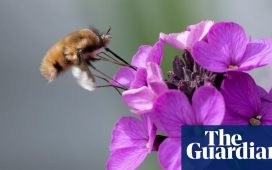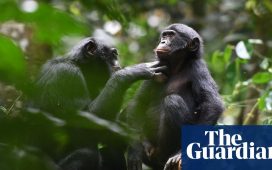The brightly coloured panels of Brawin Kumar’s comic book tell the story of how two children rescue a hedgehog from an unlicensed medicine man. The mother hedgehog is delighted to be reunited with her little one, as she has lost most of her offspring to road traffic.
Kumar, an Indian researcher and ecologist, came up with the idea of writing the book in Tamil to create awareness among children who live in and around the Madras hedgehog’s habitat. Many of those children will never have seen the nocturnal creature, which, unlike the British hedgehog, aestivates (lies in a state of torpor or dormancy) in the summer instead of hibernating in the winter.
Kumar’s first encounter with the Madras hedgehog (Paraechinus nudiventris), also known as the bare-bellied hedgehog, came in 2013, while he was doing fieldwork with the Zoo Outreach Organization. In a small town near Tirunelveli in Tamil Nadu, he heard stories about a kind of rat with thorns that had been spotted on nearby farmland and found dead in the road.

It took several visits to the town before he finally saw one, curled into a ball of spines under a bush and looking like a small bunch of twigs, he recalls.
“Little in India is known about the behaviour of these solitary and elusive animals and they are not even mentioned in folk tales,” says Kumar.
“They are called mul eli in Tamil – mul meaning thorn, and eli which means rat. An adult can weigh up to 300 grams,” he adds.
The Madras hedgehog is endemic to southern India and is one of three species of hedgehog found in the country, and 17 worldwide. The Madras hedgehog lives in the dry and semi-arid lands of Coimbatore, Tirunelveli, Kanyakumari and Thoothukudi (formerly Tuticorin).
Inspired by that first encounter, Kumar started to study the hedgehogs. Local newspaper reports about sightings and conservation groups were good sources, and people also shared images from camera traps. He compiled extensive data with the help of questionnaires. His fieldwork identified 136 places across 16 districts where the hedgehogs were found.
In 2018, he and his fellow researchers published a paper based on their findings. They found that the creatures made their homes not only in arid areas but in other habitats, such as pasture and grasslands, towns and sand dunes. They also found from analysing their droppings that, besides insects, the hedgehogs also ate grass and plant material and were omnivores. “I even found many of them under street lights, because they are insect-eating and this is where they find their food,” says Kumar.
Though the International Union for Conservation of Nature (IUCN) places the Madras hedgehog in the “least concern” category, in the past two decades the population has declined drastically due to changes in habitat and being hunted for meat, traditional medicine and as pets. “The nomadic Narikurava community collect and trade in these animals. Many shops in Nagercoil sell hedgehog oil, even now,” says Kumar. “Hedgehog spines are dried and used as ‘medicine’ for whooping cough, arthritis and other ailments.”

Like their counterparts around the world, they are also susceptible to traffic. “These tiny creatures head to tarred roads during the monsoons to try to catch the sun, and become road kills,” says Kumar.
Kumar and his team have recently submitted a policy document to the Tamil Nadu government calling for the conservation of the Madras hedgehog. Meanwhile, Kumar’s collaboration with his artist friend Venkatesh Babu to create the 20-page comic book Mullikkaattu Ithigaasam (Legend of the Scrub Forest) is helping to educate a new generation about these tiny creatures.
“I realised that today’s kids don’t know anything about local animals like this one, and there is no mention in any school textbooks. That’s why I created the comic book,” says Kumar.
“Babu is basically a cartoonist who loves nature and frequently conducts wildlife-related programmes in schools in south Tamil Nadu.”
In 2018, Kumar started distributing the book in a few schools in southern Tamil Nadu and was overwhelmed by the response. “When schools reopen after the pandemic, I will start reaching out to more in the hedgehog’s habitat areas to make people aware that these insect-eating creatures are actually a friend of the farmer. We are also preparing more kits with posters, booklets, stickers and colouring books.
“Researchers and local NGOs have to work together to save these little creatures before they become extinct, and I think by appealing through the comic book to the next generation, their interest will be kindled,” says Kumar.
Find more age of extinction coverage here, and follow biodiversity reporters Phoebe Weston and Patrick Greenfield on Twitter for all the latest news and features






